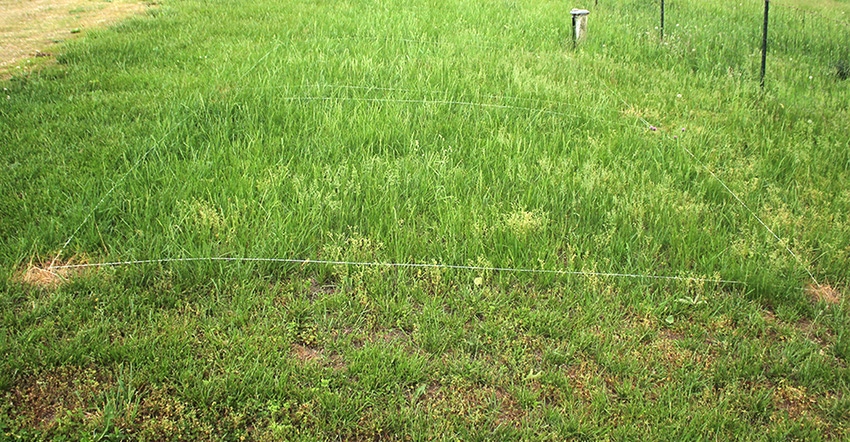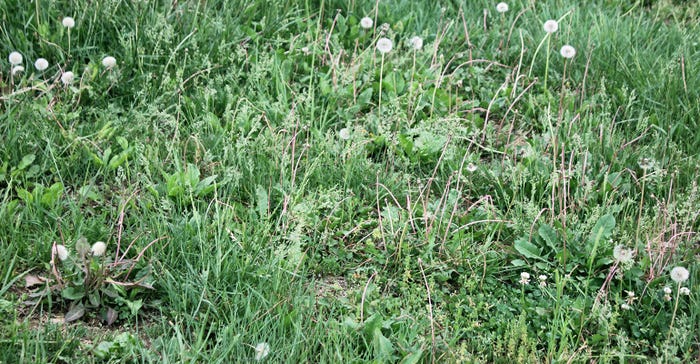
As we drove down the gravel road, I turned to my husband and said, “Wow, the pasture looks great. You mowed it.” A few feet more and we made it into the driveway, where I added, “Did you forget to mow the lawn?”
We have your typical farm lawn. You know, the one you don’t run through barefoot for fear of stepping on a bee amongst the dandelions, or a rogue thistle plant. And if you do, well, you get points for bravery.
Some may say there are more weeds than grass in our lawn. Actually, the “some” equates to my son-in-law. Not necessarily a great way to get in good with the mother-in-law, but he speaks truth. And he should know, since he manages chemical sales for the turf and ornamental industry in three states.
So when my husband replied, “I wanted to, but I just couldn’t,” I knew exactly what he meant. My front lawn had become the test plot for some turf chemicals.

FARM MIX: Some rural lawns may not be as pristine as those of our suburban neighbors. Our lawn was once a pasture and continues to show signs of this with its share of dandelions, weeds and fescue grass.

Many farmers conduct corn and soybean trials on their farm. So, I figured our family could do its part for turf. But there are three distinct differences between turf trials and crop trials:
1. Location. Our “field” is right in the front yard. For many farm trials, it is the same. With the timely rains, both crops and lawns grow fast. While corn and soybeans look good, our yard looks unkept. So much for rural “curb” appeal.
2. Plot plan. For crops, the plots consist of nice uniform rows. For turf, it is in patches. This late-spring trial encompasses four distinct areas of our lawn. Three of them suppress different weed species. But then there is the one control group area that allows everything to grow — weeds and all.
3. Signage. Farmers know what variety or hybrid is planted, depending on the sign. Some companies even offer their own plot sign. We do not have any. When I reached the house, I asked the son-in-law, “Can’t we have a sign so people know why we are not mowing?” His answer: Nope.
We will be able to mow some of our trials in a couple of weeks. I guess that’s better than farmers enduring ugly corn and soybean plants in their field trials all summer.
Admittedly, it has been interesting to observe the chemicals at work. I walk out daily to see what is yellowing and dying. Then I inspect to see which area has clover and which does not.
This fall, he will expand the trials and treat the farm lawn in an effort to establish more grass than weeds. I guess my lawn is a great outdoor lab.
Ultimately, it is important that we each do our part to help out — whether crop or turf trial. I view it as a way to not only help my lawn, but also the next generation. In rural areas, we have an open canvas to test chemical use, rates and application methods. The more involved we are with on-farm studies, the greater change we can make for the future.
Now, if we could just get a sign that reads “It’s not laziness, it’s research.”
About the Author(s)
You May Also Like






